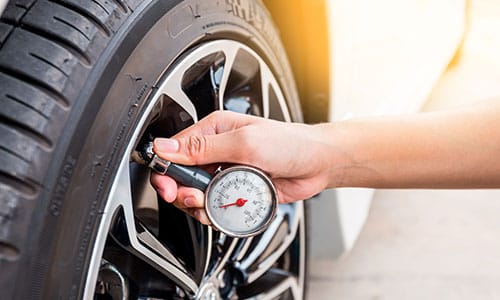One of The 2021 Budget’s big wins for fleets was the news that fuel duty would remain frozen for an 11th straight year. But with businesses firmly on the Road to Zero, that’s not a bonus we’d expect fleet managers to be able to bet on in twelve months’ time.
Instead, here are some of the other ways fleet companies can aim to save money on fuel costs between now and next year’s budget.
(N.B. – We’ve left off the truly obvious, like “maintain your fleet vehicles regularly.” We’re sure you’re doing that already!).
Many modern vehicles have built-in automatic stop/start systems that turns off the engine if the driver leaves the car in neutral with the handbrake engaged. In those cases, leaving the engine on for more than ten seconds uses more fuel than if you turned it off altogether. The first of our fuel-saving tips for business fleets is therefore to encourage drivers to cut out the engine idling – both in traffic, and whenever they’re off the road on a designated pit stop.

One of the best ways to reduce fleet fuel consumption is simply to make less journeys in the first place. Of course, that’s often easier said than done. After all, you’ve got to send drivers where you’ve got to send them. But through careful route planning, you can often combine two or more potential journeys into one route, allowing your fleet to save on the costs of running multiple vehicles where not entirely necessary.
Anyone who’s passed a driving theory test can tell you that harsh accelerating and harsh braking leads to more fuel consumption. Yet it’s all too easy for professional drivers to lose concentration for just a split second (especially on extremely long routes), find they’re going too fast for the situation, and slam on the brakes. Just think how much fuel your whole fleet is using if every one of your drivers does that on even a reasonably regular basis! One of our top tips on improving fuel for fleet businesses is to give regular top-up training on the basics of speed awareness, including the benefits of and gradual acceleration and braking.
According to the American National Highway Traffic Safety Administration (NHTSA), every 1% decrease in tyre pressure below the optimum level equates to a 0.3% reduction in fuel economy. A simple tip to help your fleet save fuel is to make sure your vehicle’s tyres are pressure checked regularly, and to make sure all vehicles in your fleet carry a tyre pressure gauge so drivers can check it themselves at rest stops on long journeys.

Like tyre pressure, the weight of your fleet’s vehicles affects fuel economy. Unlike tyre pressure, this is one that those back at H.Q. are responsible for. If you’re a fleet manager, simply finding ways to make your vehicles lighter could be one of your top ways to reduce fleet fuel consumption. That could mean choosing your cargo more wisely or even making better decisions about the models that make up your fleet itself.
The last of our tips to help your fleet save fuel is to closely monitor your fleet’s fuel consumption and how your drivers behave behind the wheel.
You can do this using a comprehensive telematics solution that can tell you what good and bad driver habits look like in your fleet, what your optimum routes should be, give you mileage and maintenance reports, and more besides.
At SG Fleet, we use Motrak to help fleet businesses save on fuel costs, drive more efficiently (not to mention safely!), and pinpoint opportunities to make their fleet run to optimum efficiency.
Not only that, but we appreciate that no two fleet businesses have the same focus. We therefore take a client-focused approach, working with you to understand how Motrak can benefit your business and making suggestions that meet your needs.
Call us on 0344 854 5100 or email Chris Salmon at CSalmon@sgfleet.com.com.